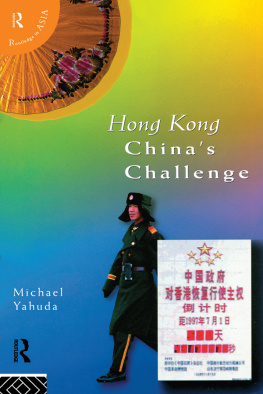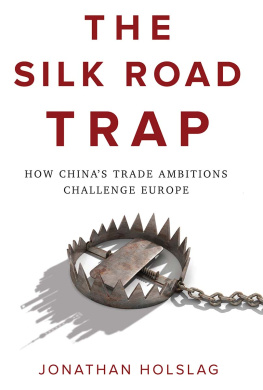For Tara, Zhao Wen, and my parents
Contents
I FIRST MOVED TO CHINA in the summer of 2008. My hope was to stay the summer and return with, at the most, a smattering of the language. This rather modest plan turned into an unexpected decade-long journey, which gave me a ringside seat of the countrys phenomenal rise. I moved to Beijing in 2009 and lived there until August 2018, working as a reporter for The Hindu and then for India Today. My job gave me a privileged opportunity to travel the length and breadth of the country, beyond the glitzy skyscrapers of Shanghai and the grand avenues of Beijing that greet most visitors.
When I left for India in August 2018, I resolved never to write a book about China. There were two reasons for this. First, things changed so fast in the country that events often overtook even what I wrote for India Today, a weekly magazine. Where would that leave a book? Moreover, ten years may be just a blip in the life of a country. This is especially true for one with a history as long as Chinas.
But the longer I was back in India, the more my resolve began to weaken. The China that I encountered in conversations with people, in newspapers and on television was, in many ways, unrecognizable from the nation I had experienced. As a country, India grossly underinvests in trying to understand its most important neighbour. This is at every level, from the media to the business community to the government. When I left Beijing, there were only four Indian reporters based in China. There wasnt a single television channel from India that had set up a China bureau not that this stopped them in any way from holding forth every night on the topic. In contrast, almost every European country, regardless of its size, seemed to have reporters in Beijing. The Indian correspondents could only marvel at the resources they had to pursue stories. If language is a barrier, we havent done enough to surmount it.
One of the central challenges of writing this book was: how do you capture the diversity of more than a billion voices? How do you then wrap them up, with all their complexities, into one neat, easy argument, as books are required to do? My inability to answer this question was the second reason for my reluctance to write. Finally, I resolved that I wouldnt try. A note here on what this book isnt. It doesnt have a tidy argument to offer that captures the many changes unfolding in China. And it, by no means, offers a definitive history of the countrys political and economic changes over the past decade.
This book is an on-the-ground perspective of a reporter, informed mostly by interviews with people I came to meet and know during my time in China. Throughout this book, you will find a range of Chinese voices: a veteran journalist chronicling hidden disasters of the Mao era; an industrial tycoon who left Silicon Valley to lead his countrys economic transformation; a leading economist who went from being one of the architects of Chinas reforms to being vilified as a traitor; a leader of the Tiananmen Square protests who lives in exile and yearns to go home; a Peoples Liberation Army soldier who fought in the 1962 war, but spent the rest of his life fighting the government for a cleaner environment; an innovator who is using artificial intelligence to transform how Chinese companies work; and many more.
My aim in writing this book is to present some of the perspectives that I came across in my time there, to try to unpack some of these changes. My broader aim is to ask what Chinas many transformations mean for India. These pages reflect one persons subjective experience of living through these changes over the past ten years, changes that I have tried to make sense of in the only way that reporters know by talking to people.
This is an account based almost entirely on interviews I conducted during the course of my time in China. It is also informed by the work of many scholars that I regularly turned to for wisdom and context. You will find a list of those works in the Bibliography, which I hope the reader finds useful for further exploration of the many themes this book touches upon, some only at the surface.
The title, Indias China Challenge, might be interpreted in two ways something that struck me only belatedly. The first, and the way I intended, refers to the challenges posed to India by Chinas rise. It might, however, also be interpreted as the challenge that India poses to China. After all, there is perhaps no other emerging country, one with a political system that couldnt be more different, that could potentially offer a credible alternative vision to China, as I argue in the section Diplomacy. Whether India can actually do so remains uncertain. What is very certain though is the immediate challenge that our country faces from China, which is the focus of this book.
So, what is Indias China challenge?
In Part I, I look at the political challenge of dealing with the rise of a one-party state one that is now keen to offer its authoritariancapitalist model to the world and shape global institutions in line with its own values. It is hence more important than ever to understand what those values are. Chapter 1 looks at the China model and how Maos legacy continues to shape the countrys politics. In Chapter 2, I look at the rise of Xi Jinping and the changes unfolding in China in the wake of his ascension, from the centralization of power to an increasingly prominent role for a political party that earlier preferred to pull the strings from behind the scenes. These are trends that the coronavirus pandemic, which even Chinas President Xi Jinping acknowledged had posed a major test of Chinas system and capacity for governance, has accelerated. In Chapter 3, I look at the battle of ideas and the role of ideology in Chinese politics.
Part II examines the economic challenge of both learning from Chinas remarkable and unique growth story, and navigating an increasingly lopsided economic relationship driven by Indian dependencies on Chinese manufacturing, an issue of increasing salience in the wake of the pandemic. Chapter 4 looks at the manufacturing miracle and how Chinese supply chains became so integral to the Indian economy. Chapter 5 examines how urbanization has transformed the country, and the lessons to be drawn from both the promises and perils of Chinas experience. In Chapter 6, I look at the emergence of tech China, and the contradictions of an innovation power bound by suffocating systems of censorship and surveillance, as well as the growing reliance on technology as a driver of both growth and governance another trend that the pandemic has hastened.
Part III examines the third major challenge, which is manifested in Indias difficult diplomatic and military engagement with China. Chapter 7 looks at the emergence of an increasingly assertive and confident China under Xi, and how it is looking to play an ever greater role on the world stage in many ways to Indias detriment. Chapter 8 examines the complicated dynamic of the IndiaChina relationship, and how this sensitive balance is increasingly tilting towards competition and not cooperation. Chapters 9, 10 and 11 assess two of the most important drivers of that trend: the boundary dispute and a deepening ChinaPakistan nexus.
In Part IV, I look at the challenge of history of the unresolved boundary and the 1962 war and why settling the question of the past is so crucial to this relationships future. In Part V, I try to present a different perspective of China as seen from its restless frontiers, which convey a sense of a political model that is far less resilient and far less confident than it might appear to be on the surface.
Next page














